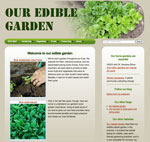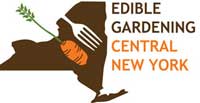Teach that computer a thing or two
|
 | | Yellow-rumped warbler |
|
Cornell's Lab of Ornithology has a new game-like project called Merlin, which will become a smart online bird identification tool. They need people to help train the computer to learn how people remember and describe birds so that Merlin can understand what bird watchers see. There are two games (and they really are enjoyable!) One is a Bird Color Challenge, and the other is Mark My Bird. A fun way to spend a few minutes each day! |
Baltimore Woods Summer Nature
Day Camp
|  | Summer time is for playing outside at Baltimore Woods. Groups of children led by experienced counselors hike, explore, play, and learn about the natural world during these week long day camps.
There are a variety of camps for these age groups: ages 5-12, 4-5, and 13-15.
New summer camps include a Nature and Art camp for 4th-5th graders and themed Voyager camps for 5th-8th graders.
Register early! Space is limited, and they fill up fast.
For more information or to register, visit the Woods website or call 673-1350.
|
Learn by doing! Help maintain the zoo garden
|
 | | The zoo's habitat garden |
|
One of the best ways to learn anything is work alongside experts and other learners like yourself. A great way to learn more about habitat gardening and native plants is to volunteer to help maintain the habitat garden at the zoo. Contact Kate Woodle if you're interested. The "crew" meets Sundays 2 - 4 pm.
|
| Our Habitat Garden |  |
Visit Our Habitat Garden website for information on providing habitat, earth-friendly gardening practices, plants, and various creatures here in Central New York.
|
|
Join HGCNY!
|  |
Becoming an official member of HGCNY is easy: just join Wild Ones! When you're a Wild Ones member, you're automatically an official member of HGCNY. |
| HGCNY on Facebook |
As as more of us participate on our Facebook page, this will become a useful resource for asking (and answering!) local HGCNYers' questions about habitat gardening. |
Our Edible Garden recently updated with more resources!
|  | | Visit OurEdibleGarden.org to see an example of a Central New York edible garden, the perfect companion to your habitat garden. |
| Interested in Edible Gardening? | 
|
If you'd like to get information on Edible Gardening CNY, just email John to find out about edible gardening tours and monthly programs. Free and open to the public! |
|
Greetings!
 | | Explore a habitat garden! |
We've had a wonderful year of interesting, informative programs and a super field trip to Rome Sand Plains. Thank you to Carol Biesemeyer for organizing, and to The Nature Conservancy for their excellent guide, Bern.
It's now time for our summer Show Me, Help Me tours, being organized by Linda Rossiter and Randi Starmer.
As the name "Show Me, Help Me" implies, these aren't necessarily finished, formal gardens, but are examples of habitat gardens from relatively new to fairly mature gardens. And every gardener has things to "show" that are working well, and areas where they'd like "help" with some problem-solving suggestions.
Show Me, Help Me Tours
The first tour will be at Dave and Beth Mitchell's garden. We've enjoyed touring their yard in previous years and seasons, watching it develop year by year into a incredible habitat garden.
Their tour this year will be on Sat. June 30 at 10:00 am. Directions are on the HGCNY website.
Other tours scheduled this summer include one on Sat. July 28 at the zoo's habitat garden with Kate Woodle as our guide, and one in August at Linda Rossiter's house in Fulton.
 My own informal tours My own informal tours
The schedule for this year's tours (BUT SEE IMPORTANT NOTE BELOW):
Sat. June 16: a Habitat Garden tour at 8:00 am, an Edible Garden tour at 9:00 am, and a second Habitat Garden tour at 9:45 am.
Sat. June 23: (same schedule as above)
Come to any or all! Directions
IMPORTANT NOTE: Due to the unpredictable nature of a new grandson's arrival date, please check the HGCNY website home page before coming to make sure the tour hasn't been canceled! (There will be a notice only if the tour has been canceled.)
~ Janet Allen
|
|
|
June 2 Audubon @ Home and Garden Workshop
 | |
Common yellowthroat warbler
|
What: Presentations and Habitat restoration demonstrations
Who: Don Leopold, Author of Native Plants of the Northeast: "Native species that are no maintenance, long-lived, adapted to extreme conditions, deer proof, and produce food for people"
Ellen Folts, owner of Amanda's Garden: "Using native plants to attract wildlife"
Janet Allen: "Creating a bird-friendly garden"
Date: Sat. June 2, 9:00 am - 1:00 pm
Location: Montezuma Audubon Center, 2295 Route 89, Savannah, NY
Cost: $15/person; $20/couple; Lunch is included Register: Call 315.365.3588 or email montezuma@audubon.org Space is limited, so register now! |
|
Featured plant: Wild stonecrop
 | |
A patch of wild stonecrop
|
Wild stonecrop (Sedum ternatum) is a charming plant that's easy to grow and very useful, too.
In spring, its starry flowers light up the ground, and like most sedums, its neat, tidy leaves stay fresh-looking and green.
 | | Starry flowers |
Wild stonecrop is a short plant, just 4-8 inches tall. It can grow in sun or shade, though in intense sun, the leaves may bleach.
It likes moist, well-drained soil (though it seems to grow well in regular
 | | Tidy leaves |
soil at least in my
partially-shaded location).
If you're looking for a groundcover or just a pretty plant, give Sedum ternatum a try!
And according to our Native Plant Shopping Guide, it's available at Amanda's Garden and Maple Hill Nursery.
|
|
A "homegrown national park"
 | | Great Smokies National Park |
Our national parks have inspired many of us with their beauty and abundance of life, both plant and animal.
Clearly, neatly-trimmed lawns and ornamental plants aren't necessary for us to experience the tranquility the natural world offers.
Douglas Tallamy, author of Bringing Nature Home, has now proposed an intriguing idea: use the 20,000,000 acres of our own yards to create a new national park, a park called "Homegrown National Park," a park accessible to us at any time just by walking out our door.
Using native plants to create natural landscapes is what Wild Ones is all about, and our own yards can be models for starting this new national park. We can reinvent our yards to support biodiversity.
As Tallamy writes: "Gardening with natives is an important part of a paradigm shift in our shaky relationship with the planet that sustains us - one that mainstream gardeners can no longer afford to ignore."
You can start creating your part of our new "Homegrown National Park" this year simply by planting native plants! |
|
"But where do I find native plants?"
 | |
(Click image to download)
|
To help you find native plants in CNY, we've compiled a list of plants offered by several local nurseries. REMEMBER, nurseries can sell out of any particular plant, so it's a good idea to call before setting out on your shopping trip! DOWNLOAD: This guide is available online as a free .pdf download. |
 | |
Pollinator Habitat sign from
The Xerces Society
|
Do your part to "Bring Back the Pollinators"
Pollinators around the world are essential to our environment and they are in need of our help. Take the Pollinator Protection Pledge to: 1. Grow a variety of bee-friendly flowers that bloom from spring through fall. 2. Protect and provide bee nests and caterpillar host plants. 3. Avoid using pesticides, especially insecticides. 4. Talk to neighbors about the importance of pollinators and their habitat. And when you've taken the pledge, you can order an attractive, durable 9.5 in. x 12.5 in. sign (shown above) from The Xerces Society, an invertebrate conservation organization. |
|
|
|
|